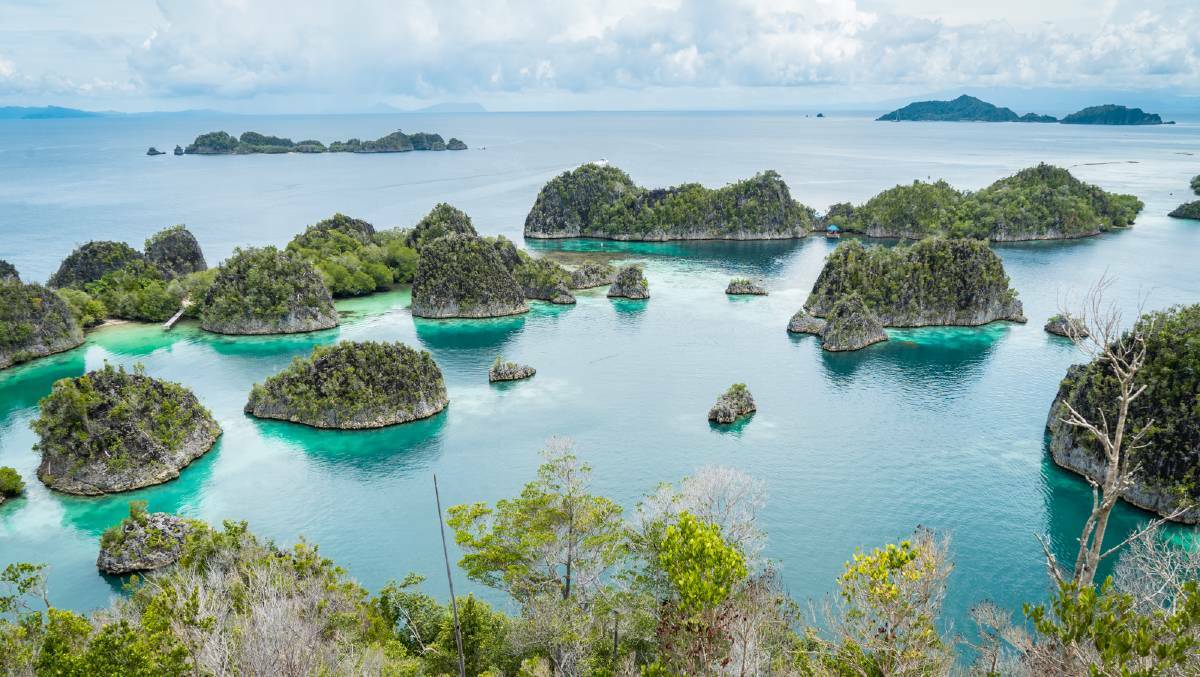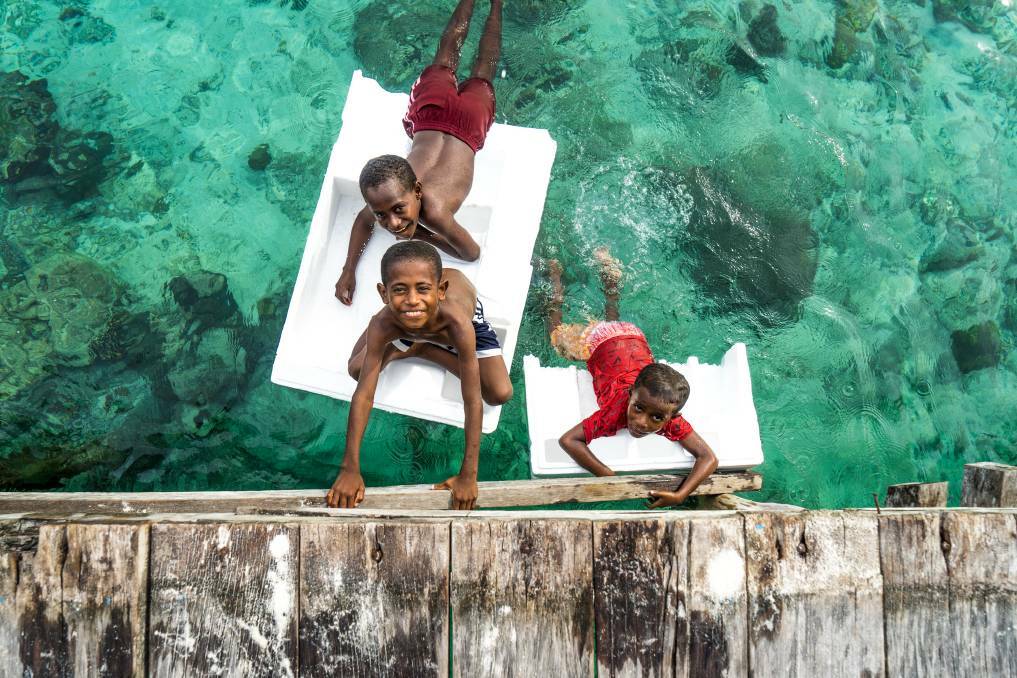In the dim of the pre-dawn, I hike uphill through the jungle of a small Indonesian island, from the jetty where a boat has dropped me off. I reach the top just as the light is turning from blue to yellow and find a place to stop and stand. Looking up into the trees, I search for the reason I have endured the scratches and mosquitos on the way up.
Create a free account to read this article
$0/
(min cost $0)
or signup to continue reading
I hear them before I see them. “Ark, ark, ark. Ooh-ooh-oo-oo-oo-ahh.” My eyes follow the sound and I spot them. Green head, yellow neck, burgundy body, and red tail, with two black ribbons hanging down. These are the red birds-of-paradise – not just one of the prettiest birds in the world, but one of the rarest. They are only found on four tiny islands here in the Raja Ampat region of West Papua.
You might think that something this special would be the main drawcard for Raja Ampat, but it’s actually not the primary reason I’m here. While birdwatchers may come for the morning display in the treetops, most visitors are coming to Raja Ampat for what’s under the water. It’s gained a reputation recently as one of the top diving locations in the world.

Raja Ampat is an archipelago of about 1500 islands and is one of the most remote parts of Indonesia. This is one of the reasons that the biodiversity has been able to blossom, with a rich ecosystem that’s been untouched by the outside world for so long. Even now, it takes a lot of effort to reach, keeping visitor numbers down.
But those who brave the inconvenient and infrequent flights to Sorong airport, make their way to the port, and find a boat to take them to one of the islands, are rewarded with about 1500 species of fish and 550 species of coral. There’s an oft-repeated story of a fish scientist called Gerald Allen who went on a single dive to count how many fish he would see and got up to 284 different species!
I’m not much of a diver but that doesn’t really matter in Raja Ampat. I do enjoy snorkelling and that’s all you need to do to appreciate the underwater wonderland. And there are lots of other things to see in the region. Boat tours will take you between the islands, to a viewpoint at Pianemo, for instance, with the iconic postcard shot of a small cluster of rocky islets. There are islands with beaches for swimming, others for hiking, some for spotting wildlife.
One afternoon, I’m on a boat that stops suddenly in the middle of the water. It turns out we’ve run onto a sandbank that’s been exposed by the low tide. But it’s intentional, a part of the tour, because from here you can easily walk along the bottom of the sea towards a small uninhabited island. Surrounded by clear water, bracketed by clear blue sky, it glows like an emerald on the horizon.

My favourite islands, though, are those where you can meet some of the local communities. There are only about 50,000 people living on all the islands of Raja Ampat, and they have a strong culture that, like the ecosystem here, has been able to develop without much interference from the rest of the world. Most of the villages are based around fishing, but tourism is slowly becoming a part of local economies. One day I visit Arborek Village (population 197), which offers visitors a chance to learn more about life on the islands. Some of the children perform a traditional song, and a few families prepare a lunch for my group. I drink from fresh coconuts and snorkel off the beach.
At other villages in Raja Ampat, there are local families who are now offering homestay accommodation. Initially it was to give budget travellers an option because the more established dive resorts can be quite expensive, charging a minimum of $200 a night.
But it’s become a popular way for visitors to spend time with the communities and see a more authentic side of the islands. Many of these homestays have incredible locations on the beach or in wooden huts over the water, so perhaps it is not surprising that prices have gone up recently.
Tourism is increasing in Raja Ampat and, as a result, there are a few more accommodation and flight options than you would’ve found in the past. But it’s still an experience you share with few others. It’s puzzling to me sometimes that you can have options like Bali and Raja Ampat in the same country – just 2000 kilometres apart yet they could be on the other sides of the world. But that’s what makes Indonesia, the world’s largest archipelago, such a paradise.




